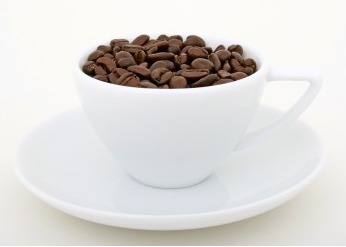Introduction to the basic concept of raw beans small beans are not good.

It's not good for Douxiao.
1. Grading: the seeds are taken out and then screened and graded. Guatemala, Costa Rica and other countries are rated according to the planting height, more than 4500 feet above sea level is the highest "extremely hard bean" (SHB). Colombia, Kenya and New Guinea are graded by particle size, with larger and higher grades (with the exception of Kenyan beans).
In addition, some producing countries are divided into grades 1 to 5 according to the uniformity of defect rate and coffee bean size. The higher the series, the more flaws. It is worth mentioning that there is no inevitable relationship between the size and quality of coffee beans. Yemeni mocha appears to be malnourished, but it has a strong fruity aroma.
There is a different kind of "Peaberry" in the grading process that is worth introducing. Normally, each coffee fruit contains two flat seeds, but 5% to 10% of the fruits contain only one seed and have a lovely oval shape. the industry believes that this kind of round beans absorb the nutrients of the two seeds alone, and the flavor is stronger than flat beans, so some producing countries especially pick out small round beans to sell separately. Adzuki beans have recently become a hot item in the American boutique coffee industry.
two。 Transport: raw beans are properly treated and graded, and can not be exported in a hurry. Experienced coffee farmers will let raw beans "rest" in the warehouse for a month or two, so that the humidity of raw beans can be adjusted to about 10% to 12% before release, because the water content of raw beans is in this range, the quality is the most stable, beyond or below this percentage, raw beans are not easy to survive for a long time.
3. Treatment: the coffee we drink is a drink made by roasting coffee seeds. How to take out the seeds of coffee fruit, this process is called "processing", which can be divided into three kinds: washing method, sun washing method and semi-washing method. The flavor of coffee is deeply affected by the way of treatment. generally speaking, the coffee washed by water has a bright and clean taste and a strong sour taste, but the consistency is slightly lower. The flavor of the solarization method is more complex, with the taste of the sun, the fruit flavor is very strong, and the consistency is better than that of washing, but the bean phase is not good. As for the semi-washing rule, it has the characteristics of both the first two ways. At present, the most widely used method is washing.
How to wash raw beans?
The so-called washing method means that the coffee fruit is immediately picked when it turns red, the hard peel is removed by machine, the sticky berries are exposed, and then thrown into the pool to ferment. In about a day or two, the bacteria will eat most of the pulp attached to the seeds. The whole fermentation process needs to be monitored by the old master, if it goes too far, it will destroy the quality of coffee beans. After the berries are removed by fermentation, rinse the residual pulp attached to the seeds with clean water. At this time, the seed has been taken out, and then the drying process, it is best to lay the ground for the sun to dry, the flavor is better, but if it rains, it can also be dried by machine, but the temperature should be controlled. Dry and then polish. Generally speaking, washed beans are bluish green, beautiful, and have a clear and bright sour taste. Guatemala, Colombia, Blue Mountains, Cana, Kenya, Java and Panama coffee are all washed beans. Washing is used in Latin America with the exception of Brazil.
The rule of the sun is to take the red fruit to dry directly and then force peeling and shelling. In this way, beans are often defective and not very beautiful. The appearance of the common foreign body or stone bean appearance of the sun-dried beans is more incomplete, the flavor of the beans treated by this method is more complex, with the taste of the sun, the fruit flavor is very strong, and the consistency is better than the washing method, but the bean phase is not good. General Brazilian beans as well as Manning and mocha are typical sun-treated beans.
Let's talk about late harvest (natural solarization). This method is the oldest way to get seeds, and it is easier than washing. Wash the fruit and pick it when it turns red, ignore the sun rule, continue to make the fruit purple and black, and finally fall off on its own, then spread the fruit in the sun for a few weeks, and then remove the seeds naturally after the pulp is dry, and then remove the stiff pulp by machine or manual grinding. The focus of late harvest is to let the seeds fully absorb the aroma and sweetness of the pulp, and then after exposure, the flavor is more complex than water-washed beans, and the consistency is also good. Yemenmoka, Harald, Ethiopia, and some Brazilian manor beans all fall into this category.
Finally, the semi-washing method. The first step is the same as washing. The fruit is picked when it turns red, but it is not thrown into the fermentation tank. Instead, the peel is removed by a machine, the berries are spread on the ground, dried and moistened, and the dried flesh is ground with a special machine to remove the seeds. Most of Mantenin in Indonesia adopts semi-washing method. Brazil has also begun to use semi-washing in recent years, which is the only one in the world that has both sun exposure. The country of production of these three treatments: water washing and semi-washing.
Important Notice :
前街咖啡 FrontStreet Coffee has moved to new addredd:
FrontStreet Coffee Address: 315,Donghua East Road,GuangZhou
Tel:020 38364473
- Prev

General knowledge of Coffee Tasting Terms boutique coffee culture
Acidity acidity is a typical and anticipated part of coffee cuisine. It is a direct taste under and above your tongue, and its role is different from that of taste to wine. Acidity provides strong, clear and lively sensory properties, without the appearance of acidity, coffee coffee tends to be insipid. Pay attention to this acidity indicator, thousands of
- Next

The Origin of Italian Coffee Common sense Cappuccino
Fanz George Kolschitsky, a Viennese, is the founder of Cafe Latte with Milk and Coffee. Let's talk about the origin of Cappuccino. Both drinks are made from coffee and milk, but cappuccino has a more knowledgeable origin and has always been the best material for the study of character changes in Europe and the United States. The history of the word Cappuccino is enough to illustrate a
Related
- Beginners will see the "Coffee pull flower" guide!
- What is the difference between ice blog purified milk and ordinary milk coffee?
- Why is the Philippines the largest producer of crops in Liberia?
- For coffee extraction, should the fine powder be retained?
- How does extracted espresso fill pressed powder? How much strength does it take to press the powder?
- How to make jasmine cold extract coffee? Is the jasmine + latte good?
- Will this little toy really make the coffee taste better? How does Lily Drip affect coffee extraction?
- Will the action of slapping the filter cup also affect coffee extraction?
- What's the difference between powder-to-water ratio and powder-to-liquid ratio?
- What is the Ethiopian local species? What does it have to do with Heirloom native species?

